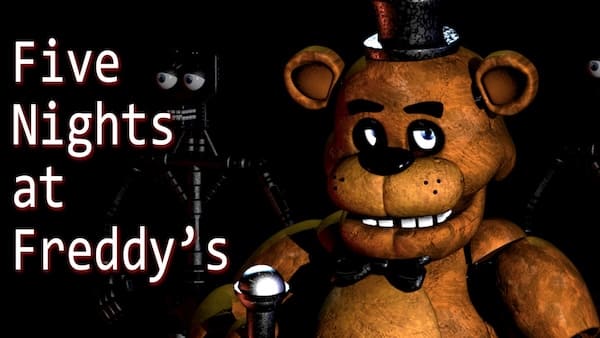Table of Contents
ToggleIntroduction to the Franchise
It starts with a quiet night. A small office. A flickering monitor. Then—a sound in the hallway. That’s the unsettling charm of Five Nights at Freddy’s (FNaF), a game that turned indie horror into a global phenomenon. Created by Scott Cawthon, what began as a solo project quickly morphed into a multi-title franchise with books, films, and a cult following. You’re not just watching creepy animatronics—you’re trapped with them, counting seconds, conserving power, praying the clock hits 6 a.m. It’s simple, terrifying, and endlessly replayable. Nearly a decade later, it’s still a must-play for anyone brave enough to look.
Origins and Development
Scott Cawthon didn’t set out to make one of the most unsettling horror games of the decade. In fact, his earlier work—Chipper & Sons Lumber Co.—was meant to be a cheerful, family-friendly game. But when players said the characters looked creepy, almost like haunted animatronics, something clicked. Instead of pushing back, Cawthon leaned into the criticism. He embraced the fear.
That decision gave birth to Five Nights at Freddy’s, released in August 2014. He built the game using Clickteam Fusion, developing most of it alone. The first game was simple, but powerful. It wasn’t about gore—it was about tension, timing, and dread.
As the series grew in popularity, so did its ambition. Cawthon partnered with Steel Wool Studios to expand the universe into virtual reality and open-world gameplay. What began as a quiet indie release soon evolved into a multi-title franchise—with each game diving deeper into fear, mystery, and psychological horror.
Gameplay Mechanics Overview
You’re alone in a dark office. Just you, a few flickering lights, and a set of aging security cameras. Your shift runs from midnight to 6 a.m.—five nights in a row. Sounds easy, right?
Wrong.
The animatronics are moving. Slowly. Silently. They shouldn’t be walking around, but they are. And they’re coming for you.
You flip through the cameras, trying to track them. Every second counts. Every mistake drains your limited power. Shut the doors too early? You might not make it till morning. Wait too long? It’s over in a flash.
The tools you have—light switches, doors, cameras—aren’t weapons. They’re lifelines. And they all run on one power supply that’s ticking down with every action you take.
What makes Five Nights at Freddy’s so addictive isn’t what you see—it’s what you can’t. The quiet. The waiting. The creeping fear that something is watching you back.

Key Features and Evolutions
Each game in Five Nights at Freddy’s adds new layers of fear—some subtle, some chaotic. In the original, it’s you in a chair, checking cameras, listening for footsteps, managing doors and lights with a draining power meter. You learn fast: hesitation gets you jump-scared.
But then came FNaF 2. No doors. Instead, you’re given a flashlight, a mask to wear, and a music box that must stay wound or something truly awful comes crawling out. I remember one night forgetting the box… the screen went black. Never made that mistake again.
FNaF 3 changes everything. You’re watching vents, fixing errors, luring one animatronic—Springtrap—away with sound. Meanwhile, hallucinations flicker across your screen. They don’t kill you, but they mess you up just enough to cause panic.
By FNaF 4, you’re not a guard anymore. You’re a child in a bedroom, no cameras, just pitch-black hallways and breathing in the dark. You have to listen closely. One wrong move, and something leaps from the shadows.
Later games like Sister Location and Security Breach bring movement, puzzles, and even allies like Freddy himself. But the tension? It never leaves.
How FNaF Compares to Other Horror Games
Five Nights at Freddy’s stands apart by making stillness the scariest part of the experience. Take FNaF 2, for example—it removes the safety of doors and forces you to rely on a flashlight, a mask, and a ticking music box. You’re juggling tools, not running from monsters.
Now compare that to Friday Night Funkin’. It’s fast, colorful, and rhythm-based. There’s tension, sure—but it’s competitive, not creepy. You’re pressing keys in time with music, not listening for breathing outside your door.
Then there’s Poppy Playtime Chapter 1. It’s atmospheric like FNaF and leans into the “evil toy” vibe. But it’s built around movement and puzzles—you’re exploring, not surviving in place.
FNaF’s horror isn’t about running. It’s about waiting. Watching. Listening. It’s mental. That’s what makes it linger.
Controls and Interface
The controls are simple:
- You move the mouse to look around
- Click buttons to turn on lights
- Flip through camera feeds using the monitor.
That’s it. No jumping, no running—just watching and reacting. But every action drains your limited power. Use too much too soon, and you’ll be left in the dark with no way to defend yourself.

Strategy & Pro Tips for Survival
Surviving Five Nights at Freddy’s isn’t about luck—it’s about patterns, precision, and staying calm under pressure. Each night ramps up the difficulty, and by Night 3, the animatronics aren’t messing around.
Early nights (1–2) are forgiving. Don’t waste power flipping through every camera. Instead, focus on the lights outside your doors. Check Pirate Cove occasionally to keep Foxy in place. Use cameras sparingly—they burn power fast.
From Night 3 onward, Freddy becomes active. Top players recommend keeping the camera on him constantly—this slows his movement. Listen for his laugh. Each one means he’s changed rooms. If he reaches the right corner, check him frequently or close the door.
Footsteps are key. Bonnie and Chica make noise as they move. Don’t rely only on visuals. Sound is your best friend here.
Foxy’s a different threat. The less you check on him, the faster he runs. But if you hear banging, you’re safe to open the door—he’s already retreating.
Golden Freddy? Flash of static, poster changes, sudden appearance? Flip your monitor up and down quickly. Stare too long, and it’s game over—or worse, your game might crash.
Gamer’s Perspective & Rating
After clocking over 40 hours across the series, I still flinch when Freddy laughs in the dark. One of my proudest moments? Beating 4/20 mode by reaching 5 a.m. with just 7% power left—barely survived.
It’s not flashy. It’s claustrophobic. Every sound makes you freeze. Every decision matters.
My rating: 9/10. Cold sweats. Real fear. No regrets.
Community, Lore, and Fan Culture
Behind the jump scares lies a story that’s anything but simple. Five Nights at Freddy’s is packed with hidden clues, cryptic minigames, and dark theories—ghost children, haunted suits, a murderous purple figure. Fans have spent years piecing it all together.
Reddit threads run deep. YouTube is full of timeline breakdowns, voice analyses, and gameplay dissections. Some videos hit millions of views.
FNaF also expanded beyond the screen—with novels, graphic novels, and a movie that brought the animatronics to life in a new way. And the fan games? There are hundreds. Entire communities have built their own terrifying tributes.
It’s more than a game now. It’s a universe.

Platforms and Accessibility
Five Nights at Freddy’s is available on almost every major platform—Android, iOS, PC, Xbox, PlayStation, and Nintendo Switch. It runs smoothly on mobile, with touch-friendly controls that work surprisingly well. Whether you’re a hardcore PC gamer or just curious on your phone during a late-night scroll, FNaF is easy to pick up—and hard to put down.
Critical Reception and Legacy
Critics were split. Many praised Five Nights at Freddy’s for its eerie atmosphere, creative tension, and deep lore. Others found the gameplay repetitive after a few nights. But that didn’t stop it. The game exploded online. YouTubers like Markiplier and streamers helped turn it into a cultural moment. FNaF didn’t just redefine indie horror—it reshaped how horror games live and grow in the hands of players and creators alike.
Final Thoughts: Why FNaF Is Worth Your Nightmares
Five Nights at Freddy’s doesn’t rely on gore or speed. It traps you in silence, then makes you question every sound. It’s a slow burn, where fear creeps in, not crashes down. For horror fans who enjoy tension over chaos, this one sticks. You won’t forget your first night—and you’ll never relax in the dark again.












